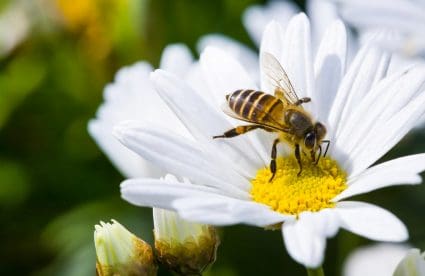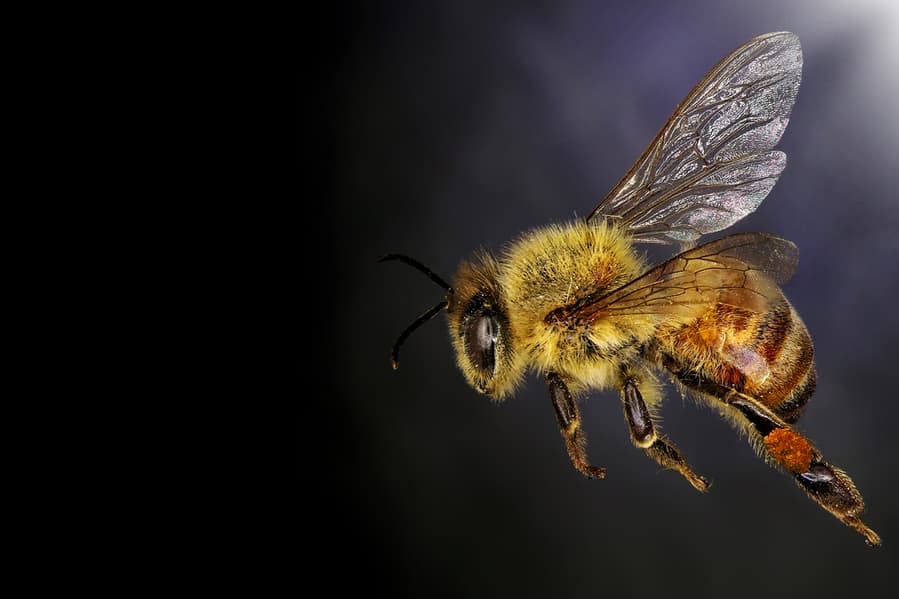
While we all love bees for the “oh, so sweet” honey they produce, having them around would compromise your peace of mind.
Besides, by no chance would anyone want tiny hairy bodies, with 5 eyes and 6 smelly legs, flying around in their house.
If not harmful, bees are sure to test your patience with their constant long buzzing. So how do you get rid of the bee?
Are there any tips to keep bees away? Do you need to evacuate the house for good? This article is all you need to escort them out of your house.
When you find yourself toe-to-toe with a bee, you first need to measure the level of danger it poses to you.
The stingers are nasty. With just one sting, a painful bump is a sure outcome!
Preventive measures are another factor to consider with bees around. Once you’re all clear, it’s time to catch the bee in your house.
Chasing away bees is undoubtedly a difficult task.
This article emphasizes the differences among the most common bee types (western honey bee, bumblebee, and killer bee), why they might be in your house in the first place, and precautionary measures when isolating them.
If you’re trying to catch one, you may:
- Use a physical approach with a bowl or a cup.
- Make a sugar-water trap in a lid-covered container.
- Use a flower-containing jar.
And if all fails, call in a friend. They’ll help you out. Whatever you do, make sure you keep their stingers in check. They are surely nasty!
As you read, you will uncover various facts about bees and everything you need to know to get rid of a bee in your house. So, brace yourselves for a deep dive into every nook and cranny of the bees’ world. You’ll learn about the main species of bees, the reasons for their appearance, the danger they pose, and how to get rid of them in your house. Finally, you’ll learn how to catch them.
Top 3 Most Common Bee Types
Avoiding bees can be inevitable because there are about 2 trillion bees worldwide! You’re bound to come across one eventually. So, which one are you seeing?
While knowing over 20,000 species of bees is not possible, it is essential for everyone to be able to differentiate between a bee and a wasp.
So without further ado, here are the top 3 most common varieties of bees you might encounter:
1. Western Honey Bee

The western honey bee is perhaps the most common bee type out there.
Thanks to humans, western honey bee colonies have spread to every continent except Antarctica.
These bees have earned a name for themselves due to their honey-making and pollination activities. Both activities are fruitful characteristics used by professional beekeepers.
Western honey bees have a reddish-brown appearance with black bands and yellowish rings on their abdomen. Those are pretty noticeable features to the naked eye.
They’re a bit hairy with lesser hair on their abdomen, and their hind legs come equipped with tiny pollen baskets.
But don’t let their size fool you. Female western honey bees can and will sting if they feel threatened!
2. Bumblebee

Bumblebees are notorious for their cute outward appearance. These fuzzballs are popular pollinators, with many plants entirely depending on them for pollination.
Removing them from the equation would mean losing many varieties of flowers that you once used to see in the market!
These bees have a distinct round shape that easily distinguishes them from the rest of the bees. Their bodies are covered with tiny hairs and grow about 1 inch in length.
The colors associated with them are yellow and black. However, some variants have a combination of orange and red too.
Bumblebees are social. However, they are known to be vicious defenders. Beware!
3. Killer Bee
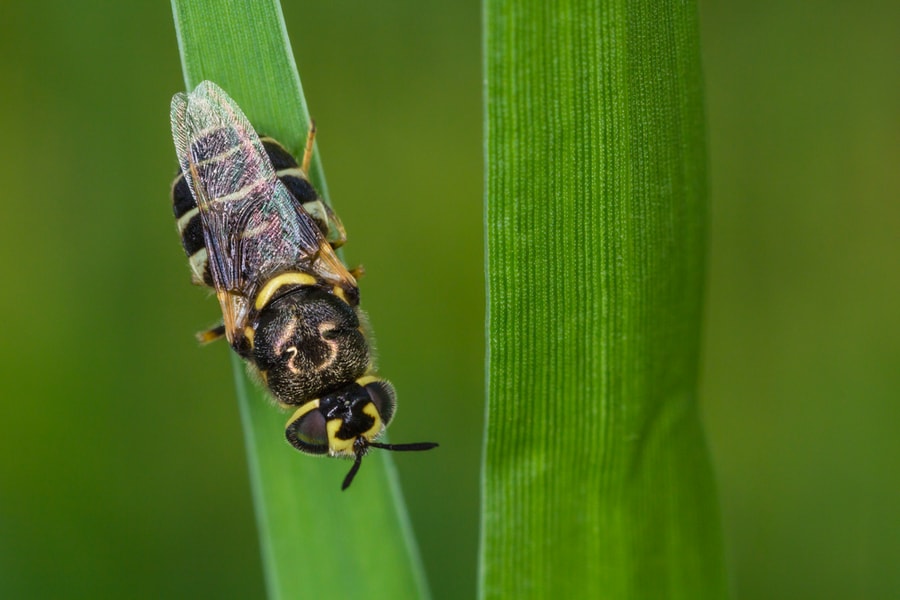
The third most common type of bee you might come across is the killer bee or the Africanized bee.
These bees are even more ferocious in defending than their cousins. And their instinct to attack in groups makes them even more deadly!
They’re even capable of killing horses! Therefore, we don’t encourage you to go all out on this one.
By appearance, killer bees look so much like the average honeybee, so the resemblance is uncanny!
The only way to differentiate them would be from their size. Killer bees are smaller in length than their counterparts. So, be careful with the imposter bees.
Killer bees attack in swarms. Each sting releases a pheromone that signals more bees to sting.
One report estimated that roughly 1,000 stings could kill an adult human as the swarms could range from 30,000 to 100,000 bees!
Why Are There Bees in Your House?
A pressing question like this needs an answer immediately. If you find a bee in your house, ask yourself this question: “Is it by chance, or should I be concerned?”
Whatever the question may be, there are only a few answers.
Bees tend to enter your homes for the following reasons:
1. Having Flowers in Your House
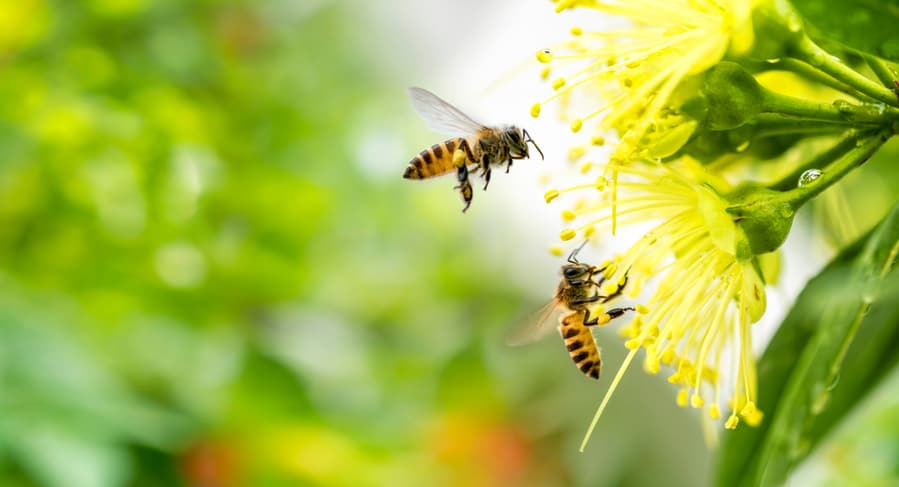
The fragrances given off by flowers are enough to attract a bee to your home. Think of them as aromatic magnets that attract bees!
2. Letting the Windows and Doors Open

Bees often wander into your home by chance. An unexpected visitor, per see?
A wandering bee may be lost and unable to find its way back. It’s probably just as surprised as you are.
3. Coming Across Scout Bees
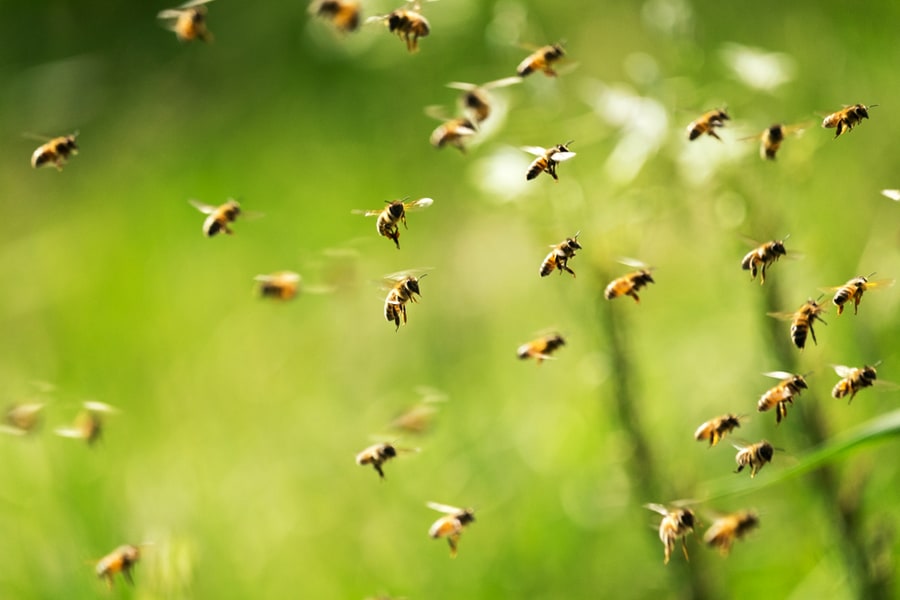
Scout bees do what their name suggests—they look for places rich in nectar and pollen. In other words, they look for a new home for the hive!
While knowing the intention of a bee is practically unheard of, a noticeable feature of scout bees is that they tend to hover more than they do when flying in a designated path.
Why? That’s because they are scouting the area, of course!
How To Be Safe Around a Bee
You need to consider a few things the moment you find a bee in your house. The following are safety precautions:
1. Wear Protective Clothing
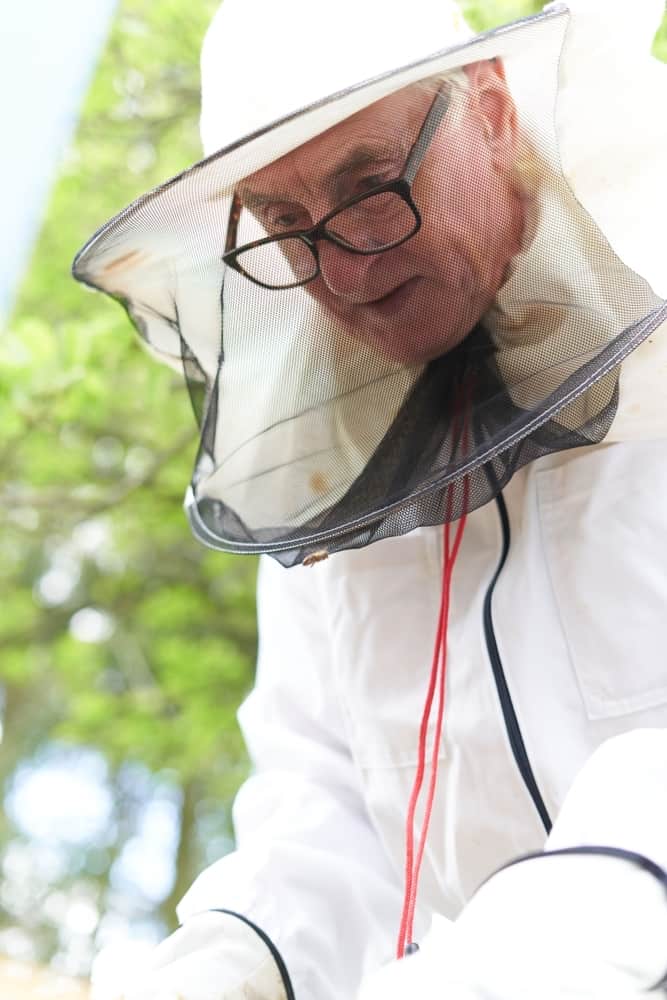
First and foremost, you must dress appropriately when catching a bee in your house because a nasty sting is the last thing you need. Wear full-sleeved clothes—the looser, the better.
Try to choose light-colored outfits. Make sure there are no holes in what you wear. Most importantly, cover your face—a bee veil would be perfect.
2. Make Gentle Movements
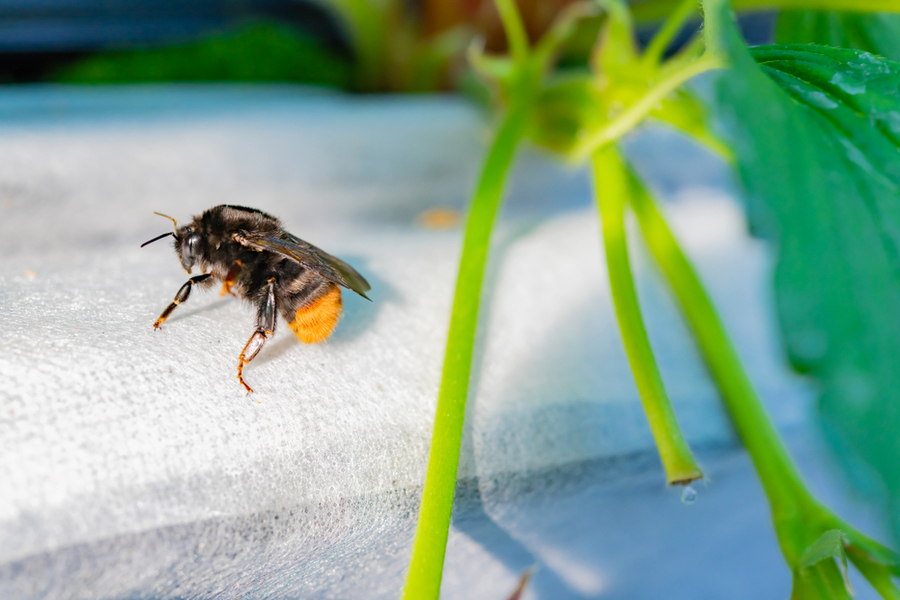
Make sure you do not make any movements when you approach the bee. Usually, it would fly away, making it harder for you to catch it.
In the worst-case scenario, it would feel threatened and dive right in for the sting!
Remember “Slow and steady wins the race.”
3. Treat Bee Stings
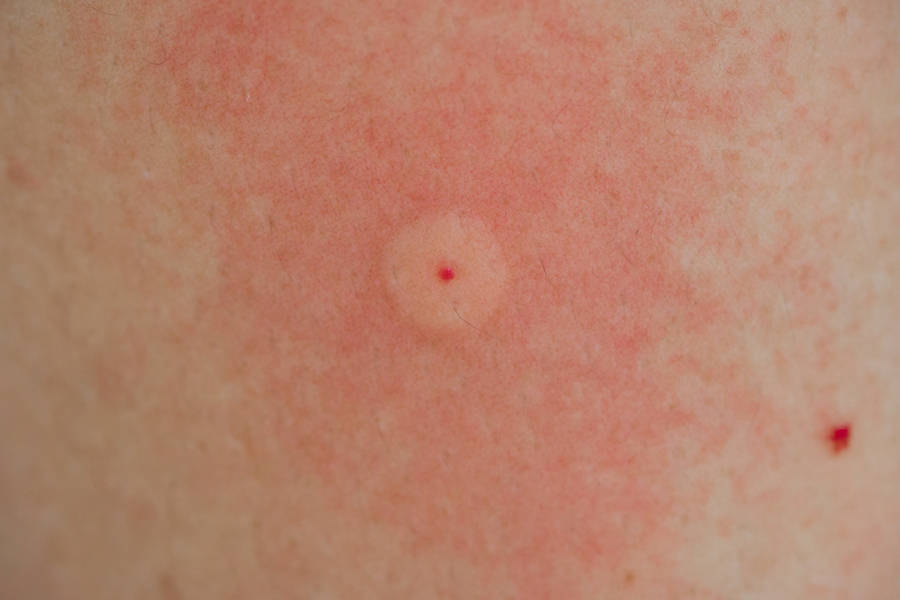
If you’re unfortunate enough to get stung by one, don’t panic.
Remove the stinger as quickly as possible. That way, less venom would be injected.
Wash the area with soap and water. Use a cold compress if you have one, and take an OTC painkiller for relief.
Seek immediate medical attention if you’re facing an allergic reaction to the sting.
How To Catch a Bee in Your House
Here are a few simple ways of catching a bee in your house:
1. Catch It Yourself

This first method is for the daring ones out there. It involves you physically catching the bee!
To begin with, you need to cover yourself completely to ensure your skin isn’t exposed.
Next, grab a large bowl or a cup. The bigger the diameter, the better your chances of capturing the bee on your first try.
You will also need a sheet of paper to make a base for the trap. Place the paper on a flat surface and leave a drop of honey or anything sweet at the center.
As soon as the bee lands on the paper, slowly make your way toward it.
Swiftly and carefully place the bowl on top of it and slide the paper underneath. Voila, you’ve caught it!
2. Make a Bee Trap

The second method requires a little more time. Here, you’ll need some sugar and water to attract the bee.
This method will take longer than the first one because its success depends upon the bee making its way into your trap on its own!
To make this sugar-water lure, mix one part sugar with three parts water. Stir it all well and pour it into a jar with a plastic lid.
Make a small hole in the lid roughly big enough to let your pinky halfway through.
Leave the jar where the bee is and let time do its trick. The bee will slowly make its way toward the container for the sugary solution.
Once it goes through the hole, you have pretty much caught the bee.
3. Attract the Bee With Flowers

An alternative to the previous method would be flowers instead of sugar-water mixture. The process is almost the same.
Place a bunch of flowers in a jar. Flowers with a strong fragrance make better bee magnets.
Bees are commonly attracted to lavender, rosemary, chamomile, thyme, and sage. Less fragrant flowers will also do the job, with added time for the bee to find it.
Spread a bit of honey around the jar. Make sure not to use large amounts, as it may keep the lid from closing.
A gentle layer would suffice to attract the bee. Leave the jar with the lid open.
As soon as the bee makes its way in, quickly cover the jar with the lid.
The above-mentioned are foolproof methods for catching bees without exerting any extra effort. Just put the trap there and forget about it!
If all methods fail, call your local pest control company for help.
Getting your house disinfected will free it from all kinds of pest intruders and further prevent them from entering again.
Conclusion
Finding bees in your house every now and then is no surprise. If it’s spring or early summer, you’re bound to see one anyway.
A bee might accidentally stumble upon your humble abode. Or perhaps, it might be attracted to the lovely flowers you keep on your windowsill. Regardless, it’s better to catch it right then and there to avoid disturbances.
Western honey bees, bumblebees, and killer bees are the most common variants. Distinguishing them is key before any further actions.
Once you’re ready to capture one, wear protective clothing and make gentle movements.
Keep note of the stingers. A sting is as painful as it gets! If you get stung, remove the stinger immediately and wash the area with cold water.
Frequently Asked Questions
When Is a Bee Most Likely To Wander Into My House?
Bees would probably stumble in your house the most during springs and early summers when they are most active.
However, factors like leaving the windows open, having flower fragrances, and encountering scout bees matter too!
What if a Queen Bee Is in My House?
Take immediate action and make sure there isn’t a hive already present somewhere in the house!
Calling in professionals would be the best choice of action.

